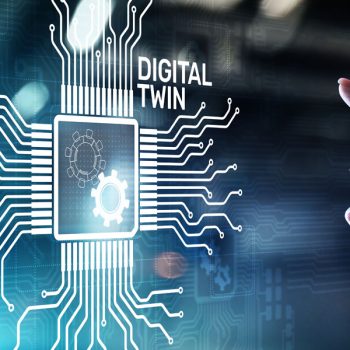Digital Twin in Bioinformatics

Digital Twins act as a digital replica for the physical object or service they represent in the healthcare industry, providing monitoring and evaluation without being in close proximity. Digital Twins are able to provide a secure environment for testing the impact of changes on the performance of a system. By distorting reality with system dynamics through machine, process or living body, problems can be predicted if and when they occur, with time to implement necessary changes or procedures. This will enable optimal solutions and risk reduction which is particularly important in the health sector. Digital twins are actively playing a crucial role in both hospital design and patient care.
Future potential of digital twins technology in medical hospitals
By creating a Digital Twin of a hospital, operational strategies, capacities, staffing, and care models can be observed to determine what actions to take. Virtual models can assist in bed shortages, spreading of germs, staff schedules, and operating rooms. These will help to optimize patient care, cost, and performance. Digital Twins can virtualize the hospital in order to create a safe environment, which tests the influences of changes on system performance without risks. This is hugely important in healthcare as it enables informed strategic decisions to take place in a highly complex and sensitive environment.
Digital Twin technology can also be used for modeling an individual’s genomic makeup, physiological characteristics, and lifestyle to create personalized medicine. It has a more individual focus than precision medicine which typically focuses on sample groups within the population. Developing a Digital Twin of a human body consists of a more advanced process than any product of engineering. Sensors can efficiently provide data to a Digital Twin of any engineered object, but data derived from individuals typically comes from expensive time-consuming tasks, such as blood tests and scans.
Applications of Digital Twin in Bioinformatics:
- Drug Discovery: Digital twins can be used to simulate the behavior of a particular disease or condition, and to predict the efficacy of different drugs on the virtual model. This can help in the discovery of new drugs and in optimizing the effectiveness of existing drugs.
- Precision Medicine: Digital twins can be used to develop personalized treatment plans based on a patient’s genetic information and medical history. The model can be used to predict the response of the patient to different treatments and to select the most effective treatment for the individual.
- Disease Modeling: Digital twins can be used to simulate the progression of different diseases and to understand the underlying biological mechanisms. This can help in the development of new therapies and in the identification of biomarkers for disease diagnosis.
- Systems Biology: Digital twins can be used to integrate multiple data types, such as genomics, proteomics, and metabolomics, to develop a comprehensive understanding of biological systems. This can help in the identification of key regulatory pathways and in the development of new therapeutic targets.
- Medical device development: Digital twins can be used to simulate the performance of medical devices such as pacemakers, stents, and prosthetics, and optimize their design and functionality. For example, a digital twin of a heart can be used to test the performance of a new pacemaker before implanting it in a patient.
- Clinical trials: Digital twins can be used to simulate clinical trials, reducing the need for expensive and time-consuming physical trials. This can also enable researchers to test different dosages, regimens, and patient populations before conducting physical trials.
Transforming Health Operations And Patient Care
- Bed Occupancy: The pandemic revealed the dire impact that inaccurate bed occupancy predictions can have on population health. Digital twins can mitigate this through better predictive analytics based on combining internal and external data—tracking patient flow internally and forecasting potential spikes using external data including population demographics and morbidity, community disease prevalence and transmission, and more. Collected and visualized through a digital twin, this data can enable providers to think more strategically about capacity and resources based on better forecasting—improving patient care as well as operational efficiency and profitability.
- Medical Device Utilization: Like oil refineries, health systems are asset-intensive facilities with monitoring and imaging devices, respirators, surgical tables and so much more that must be available to deliver optimal care at any time. Digital twins can give providers real-time visibility into how these increasingly connected devices are utilized, their performance and the need for repair—before a critical breakdown puts patients at risk. This is more vital with robotics and other high-value medical devices, which must be optimized for both patient care and revenue.
- Patient Simulations: This technology can also offer a digital twin created for each patient’s body, physiology and medical history. The twin can enable precision testing of thousands of treatments, leading to better-informed decisions that can improve patient outcomes and minimize potential harm. This can take personalized medicine into a new era where patient care is informed by each person’s medical history and health risks at a level unimaginable today.
One of the leading factors restricting market growth for the technology to be fully incorporated is the sensitivity of the system to hacking and viruses. Hackers can potentially gain access to highly private and valuable data. To address this issue developers must take care to observe any ethical issues raised by different parties interacting with the data, such as customers and partners. It’s essential they consider the data in terms of its value and contribution to the business, particularly with personal medical records. When doctors and researchers show an interest in Digital Twins, it’s significant they are taught and given the appropriate resources. Capacity development is essential for individuals and organizations to obtain so they can achieve the necessary skills, knowledge, tools, and resources to competently use Digital Twin technology.
Sources
https://www.challenge.org/insights/digital-twin-in-healthcare/

